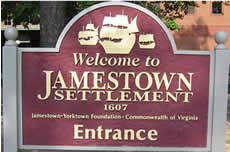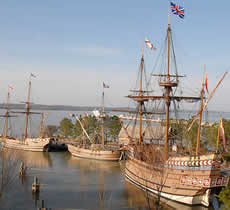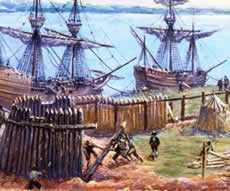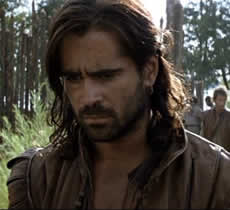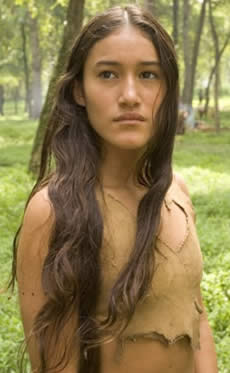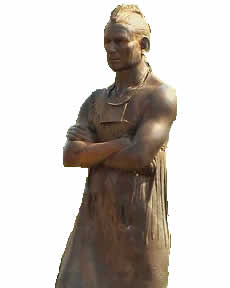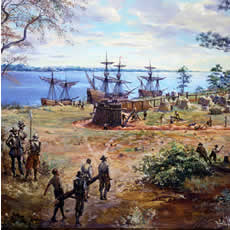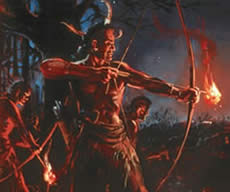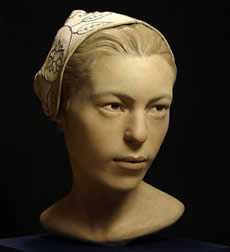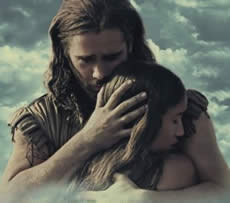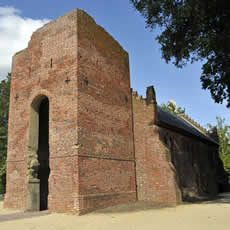USA PEOPLE SEARCH BY NAME!
- ❖ Current Address
- ❖ Phone Numbers
- ❖ Criminal Records
- ❖ Public Records
- ❖ Neighbors
- ❖ People's Age
- ❖ Property Ownership
- ❖ And Much More
Fri, 5 Feb 2016
Stories of Jamestown
When Christopher Columbus' historic voyage ended in 1492, Spain has been on the conquest to establish colonies all over America while England fails to establish theirs. In 1606, when King James I granted a new venture for the Virginia company in order to form a settlement in America.
The Virginia colony is named after Elizabeth I who is also known as the 'virgin queen'. The main purpose of the company was to look for silver and gold as well as a new route to the Pacific.
English Settlement On American Soil
A number of people left England on 1606 aboard three ships; the Godspeed, the Susan Constan and the Discovery. These three ships reached Chesapeake Bay the next April.
The colonist have formed a governing council which includes the famed explorer John Smith who was then a mercenary who was accused of insubordination and Christopher Newport, the commander of the voyage. The colony landed on an island in a narrow peninsula on May 14, 1607. This is where the first English settlement will live their lives on American soil.
Jamestown, James Forte, James Cittie, James Towne
Jamestown, the first permanent English settlement in USA was known as James Forte, as well as James Cittie and James Towne. The community initially consisted of wooden forts built around the storehouse of supplies and weapons, a number of houses and a single church.
In 1607, 40 crew members reported back to the King; they also gathered more supplies. The settlers that were left behind suffered from the constant threat of the local tribes organized under one ruler – Chief Powhatan. Eventually, an agreement was created between John Smith and Chief Powhatan which initiated a much needed trade.
The natives would trade food for equipments such as beads and metal tools. The settlers were largely dependent on this trade to survive. When John Smith went back to England in 1609, the people of Jamestown were left to suffer a harsh winter in which more than 100 colonists died.
Just when all of their hopes were lost and they were ready to abandon the town, two ships arrived carrying supplies, 150 new settlers and a new governor.
Peace and War Between the Native Tribes and the Settlers
De La Warr, the new governor did not last very long in the colony because he fell ill and went back. His successor, Thomas Gates took charge of the colony and implemented strict laws for the settlers; among them is the controlled interaction with the natives.
The new leader took a hard line with the Chief Powhatan and even raided his villages, killing residents and destroying houses. The colony also started expanding up and down James River by 1611; during this time the settlers were able to gather decent corn by themselves.
There was a period of peace that followed between the native tribes and the new settlers when "Pocahontas, Chief Powhatan's daughter, and John Rolfe, a colonist, were married in 1614. John Rolfe also introduced type of tobacco from seeds grown in the West Indies, because of this, Jamestown began to prosper.
General Assembly for the Jamestown colony has been established in 1619 with the members consisting of Virginia's male landowners. Africans also arrived at the settlement at the same year. These Africans are captured slave and were probably put to work on the tobacco field.
The peace between the natives and the settlers were broken at the death of Pocahontas in 1617 and the death of Chief Powhatan in 1618. Powhatan's successor, Opechankeno, rallied against the English settlers and was increasing their resentment as the settlers'insatiable need for land grew. In March 1622, the natives attacked the English settlement causing the death of 350-400 people.
This is one fourth of the whole Jamestown population and the attack was a hard blow to the settlers. James I tried to control the situation by dissolving the Virginia Company and making Virginia an official crown colony. Jamestown, the first permanent English settlement in USA continued to grow despite the resistance of the natives. Necotowance, Opechankeno's successor was forced to sign an treaty that obligated the natives to pay tribute to the governor and ceded most of their lands. In 1698, Jamestown was burned to the ground and the Williamsburg replaced it as the capital the next year.
Pocahontas and the English Settlers
The Powhatans were a group of 30 or more tribes with a population of 14,000. They were thriving in a rich land and a rich culture before the English settlers came. When the inevitable spread of these colonizers began in the 1600s, there here have been numerous encounters between the settlers and the tribes'men.
But not all natives are violent against the colonizers, Pocahontas, the Indian maiden who is famous for befriending the English settlers were immortalized in song, art and in story.
Pochahontas was the daughter of the highest ranking chief who governs over 30 tribes. Her formal name was Amonute and Mataoka, the name Pocahontas is a nickname which means 'playful one'. Perhaps the most known story about Pochaontas was the one which John Smith wrote. In 1607 when the girl was just at the tender age of 11, she has saved the life of John Smith.
In 1613, Pocahontas was kidnapped by Samuel Argall who agreed to return the chief's daughter in exchange for ransom. Chief Powhatan waited three months before giving in to the demand and during that time Pocahontas was taught Christian principles and was converted to Christianity and baptized with the English name Rebecca. Soon after, she married John Rolfe which brought a momentary peace between the locals and the settlers.
There are many stories about Pocahontas from this point on. Other says that she was well received by the people of London as Lady Rebecca Rolfe and even brought her sister Matchanna with her. Others however, insist that the marriage with John Rolfe was just part of an agreement to release Pocahontas.
It is unclear if there is any truth about stories that claims that Rolfe only used the marriage to promote his tobacco products. Whatever the real reason might be for the marriage, the peace it has created between the colonists of Jamestown and the Powhatan natives broke off as soon as Pocahontas died in March 21, 1616 at the age of 22 while on English soil.
The cause of her death is again another mystery, records show that she died of natural causes while others believe that she was killed by Englishmen who feared that she knew too much and they trusted her too little.
A Jamestown Controversy
During the winter of 1609-1610 the cold was too much to bear for Jamestown. The settlement suffered greatly because of the weather and because there was no way to get food. During these desperate times, new evidence suggests that the colonists ate the flesh of their fellow settlers just to survive the harsh winter.
Archaeologists have found remains of a human skull that contains indication that the person was cannibalized. The bone fragments were called "Jane". The remains were of a 14 year old English girl. Records that describe cannibalistic accounts in Jamestown were already present although the information provided is limited.
Jane's bones were found in a trash deposit at the James Fort. The fort was built in 1607 but was washed away. Archaeologists can tell from Jane's bones that one hungry settler tried but failed to open her skull because of the existence of four shallow chops in her forehead. Jane's back skull has markings that indicate that a small hatchet was used against it.
The cranium was cracked open at the last hit. The mandible shows cuts all over it which experts say were an attempt to take tissue off the face with a knife. The cheek area has also been sawed off by a knife.
The head was removed at some point; the damage done to the body indicates that the person who inflicted the blows was not an expert butcher. The hits and blows show hesitancy and tentativeness which comes with total lack of experience. These lead experts to believe that women were the one who caused the damage. If it offers any consolation, it appears that Jane was already dead before she was eaten.
Cannibalism in Jamestown
Stories of the hardships encountered by the first English settlers were spread throughout history although an evidence of cannibalism sheds a new perspective on what really happened to these colonists.
When the native Powhatans launched attacks on the settlers, they were very vulnerable and helpless against an organized group of tribes. With no regular source of food, the Jamestown residents first ate their horses and their dogs and cats. George Percy wrote a firsthand account stating that some colonists even ate their boots and any leather they could find.
Other Englishmen would also venture out to look for crops but were killed by the natives. George even accounted for a man who chopped up his pregnant wife for food. He was then executed for murder. This shows how desperate the time must have been. By the spring of 1610, only 60 residents remained. The only thing that saved the last 60 was the arrival of supplies from England.
The first English settlers in the USA have gone through a lot before eventually claiming the land. The horrors and the triumphs they have achieved has been written down in history often with different versions. The story of America is drawn in vivid colors and it never ceases to amaze anyone who ventures into its history.
Read:
Who Explorered The Yellowstone National Park?
Nathaniel Turner And The Slave Revolt
The Original Dalton Brothers
Sacagawea Showed Lewis and Clark The Way
The Vikings Came To America Long Before 1492
The History of Beer in the USA
A History of the European Immigration
The Wild West Period - The Golden Age Of America
